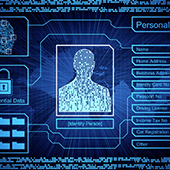 For many businesses, remote working seemed impossible for a multitude of operational and financial reasons. But with the COVID-19 pandemic relentlessly plaguing the world, working from home has become the new standard. How will this change the corporate setup?
For many businesses, remote working seemed impossible for a multitude of operational and financial reasons. But with the COVID-19 pandemic relentlessly plaguing the world, working from home has become the new standard. How will this change the corporate setup?
Enforced flexibility
A pandemic is one of the most socially, economically, and politically disruptive events that could ever happen. Infections and fatalities constantly increase, business operations are shut down, and scientists race against time to find a cure.
Companies lucky enough to remain operational still face a significant challenge: maintaining business continuity. For most, the simplest way to achieve this is by moving their business resources online and adopting an effective remote work strategy.
With resilience and careful decision-making — as well as the right tools and processes — you might just find your employees more productive, less stressed out by work, and expressive as ever.
A wealth of benefits
Remote work offers several benefits for both employees and employers. In addition to saving time and eradicating commute-related stress, remote work can improve employee productivity. A number of studies reveal that the freedom to create a comfortable environment and schedule encourages employees to perform at their best.
At the same time, employers benefit from reduced overhead expenses while also having access to a wider pool of applicants. Because workplace flexibility is among the top considerations of many young job seekers, remote work arrangements would be right up their alley.
Employers can also hire outside of reasonable commuting distance, as employees won’t have to report to the office as frequently, if not at all. What’s more, mandatory daily attendance is going out of fashion — more businesses are now prioritizing performance over hours clocked in. Many prefer focusing on the quality of outputs rather than just keeping people in the office from 9 to 5.
Businesses reap great rewards for recognizing performance instead of just presence. This approach makes for more engaged, efficient, and satisfied employees, consequently creating a healthy and progressive company culture.
Encouraging development
Many businesses believe that a traditional office setup helps bring about better relationships and collaborations. However, data actually points out that interpersonal behavior and communication — not solely proximity — are the key drivers of trust and teamwork.
Traditional work arrangements also make it easier for managers to look after their employees — it’s easy to see who is and isn’t at their workstation during office hours. However, mandating work hours and location makes sense only for time-sensitive and location-dependent jobs like retail, manual labor, and healthcare, where employees need to be physically present.
Meanwhile, for knowledge workers whose jobs involve non-routine problem solving, an office cube isn’t always the most conducive environment for devising solutions and innovations. Sometimes, the best and most unique ideas come from exposure to the surroundings, people, and events outside the confines of an office.
Embracing change
Being forced to adopt a work from home policy in the face of a global crisis isn’t an ideal circumstance to test the waters. Full-time remote work doesn’t and won’t work for all businesses. But this shouldn’t stop you from accomplishing projects and sustaining productivity and efficiency. Leverage your resources to help you weather the storm and emerge stronger than before.
Though we have yet to see if remote work is here to stay, it’s currently a nonnegotiable aspect of the corporate setup, and we should learn how to make the most out of it.
Having a strong strategy in place and the right tools and equipment are crucial to ensure effective communication, collaboration, and management. Our experts can help you configure the perfect remote working setup for your business. Call us today.

 Most small- to medium-sized businesses (SMBs) don’t possess the resources to run and maintain their IT infrastructure, let alone assess whether it’s still driving value for the company. However, if you want to ensure everything is running smoothly, it’s important to conduct technology business reviews whenever possible.
Most small- to medium-sized businesses (SMBs) don’t possess the resources to run and maintain their IT infrastructure, let alone assess whether it’s still driving value for the company. However, if you want to ensure everything is running smoothly, it’s important to conduct technology business reviews whenever possible. Whether it be cloud, mobile, or on-premises, every technology you use stores confidential data that are accessed by your employees. So how do you guarantee the safety of said data from cyberthreats like identity theft, phishing attacks, and more? Identity and access management (IAM) is the answer, and here’s why.
Whether it be cloud, mobile, or on-premises, every technology you use stores confidential data that are accessed by your employees. So how do you guarantee the safety of said data from cyberthreats like identity theft, phishing attacks, and more? Identity and access management (IAM) is the answer, and here’s why. Are you weighing the pros and cons of the cloud for business continuity? Let’s take a closer look at why the cloud is best for this strategy.
Are you weighing the pros and cons of the cloud for business continuity? Let’s take a closer look at why the cloud is best for this strategy. Dashboards have become extremely useful tools for companies to make the most of their raw data. With proper implementation, a dashboard can display essential information in an easy-to-understand format, allowing business owners to easily make informed decisions. But a dashboard can say a lot of things depending on its setup, and it’s important to choose one that can best serve your purpose. Here are three types of business dashboards to consider.
Dashboards have become extremely useful tools for companies to make the most of their raw data. With proper implementation, a dashboard can display essential information in an easy-to-understand format, allowing business owners to easily make informed decisions. But a dashboard can say a lot of things depending on its setup, and it’s important to choose one that can best serve your purpose. Here are three types of business dashboards to consider. There’s no telling when natural disasters will occur. When they do, certain regions in the country often bear the brunt of their impact, like when Hurricanes Harvey and Irma hit certain states in 2017. With a well-designed disaster recovery (DR) plan, your business can be spared from total devastation.
There’s no telling when natural disasters will occur. When they do, certain regions in the country often bear the brunt of their impact, like when Hurricanes Harvey and Irma hit certain states in 2017. With a well-designed disaster recovery (DR) plan, your business can be spared from total devastation.